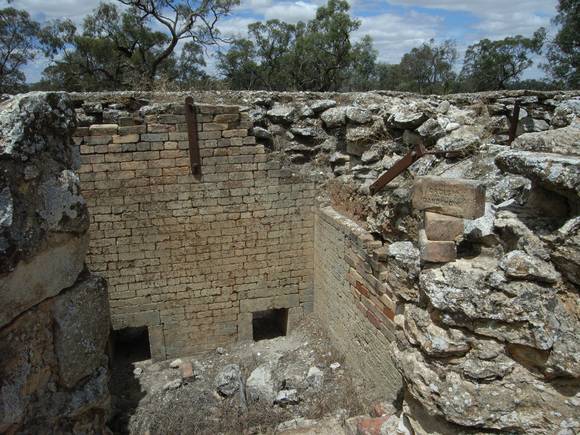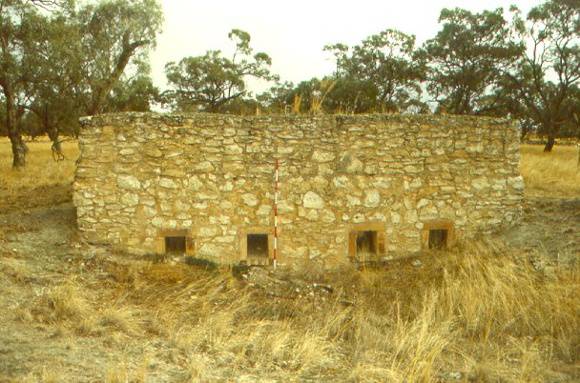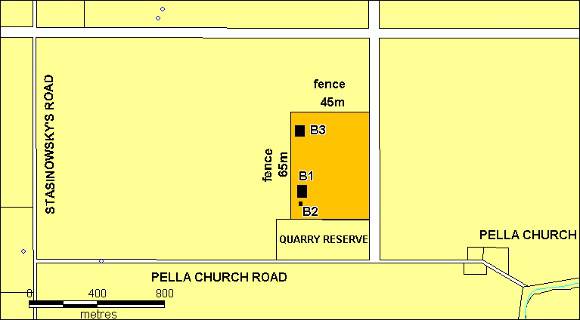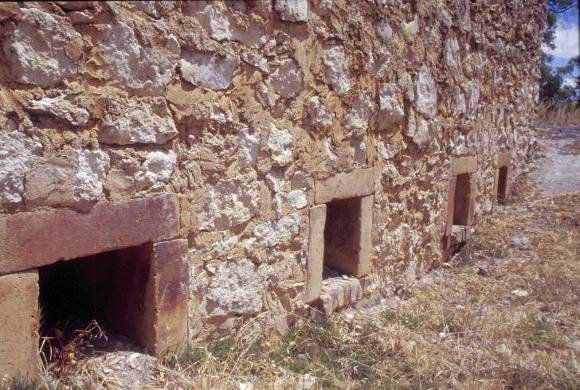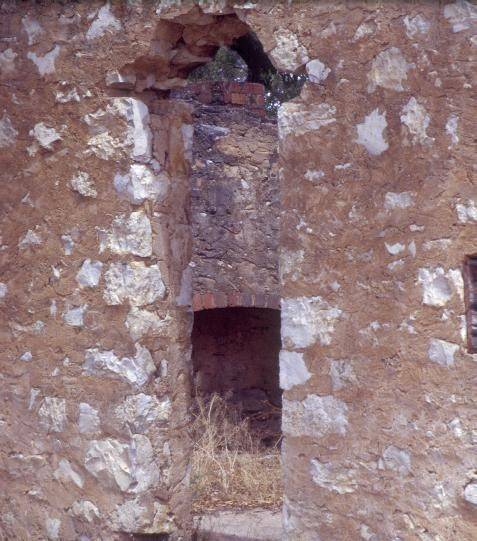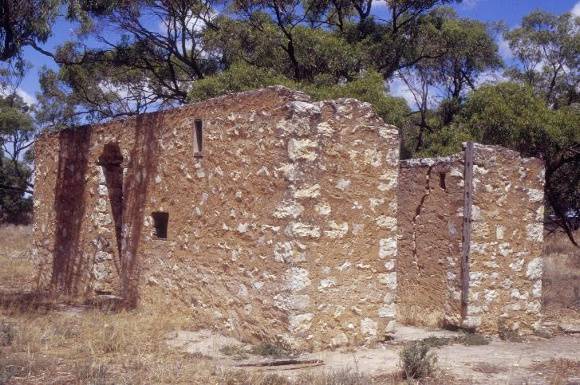| Back to search results » | Back to search page » |
|
STASINOWSKY'S LIME KILN
Statement of Significance
What is significant?
Allotment 2, Parish of Pigick was granted under the provisions of Mallee
Lands Act 1896 as a perpetual lease to Annie Wickham on 1 July 1899. In
common with many farmer settlers struggling on the marginal land and
battling droughts, Wickham forfeited her lease in 1903 and it was
subsequently applied for by Mary Holland. Holland?s application was
granted at the local Land Board held at Jeparit on 18 February 1904. By
1912 Holland had carried out improvements valued at £395, being the
erection of a house, a shed and fencing around the entire allotment.
None of these structures survive.
In c1904 a Polish family headed by Johann Stasinowsky settled on a farm
on the adjacent allotment. Johann and his wife Maria had come to Pella
from Wauraltee in South Australia. At some time between September 1912
and August 1913 Stasinowsky bought allotment 2 from Holland.
It is believed Stasinowsky built the lime kiln in c1914. The lime kiln
is an example of a ?D? type kiln. It is constructed of limestone with a
brick lining, is rectangular in shape and is set in a slight depression
in the ground. It is approximately 7m across, 4m deep and 2.5m high.
Four brick lined draw holes to ash boxes are located at the base of the
front of the kiln. Also located on the allotment are a limestone hut and
a remnant chimney. Their construction is similar to the kiln and
Stasinowsky probably built these as well.
Stasinowsky sourced limestone for burning from the local quarry reserve.
The reserve had been excised from the southern end of allotment 2 in
1910. Stasinowsky and his son Alfred built many houses in the Rainbow
area, and in 1909-10 built the Pella Lutheran church and manse from
limestone obtained from the quarry.
How is it significant?
Stasinowsky?s lime kiln is of scientific (technical), archaeological and
historic significance to the State of Victoria.
Why is it significant?
Stasinowsky?s lime kiln is scientifically (technically) significant as a
rare example of a ?D? type kiln in Victoria. Such kilns were common in
New South Wales during the late nineteenth and early twentieth centuries
but very few are known to exist in Victoria. This example is in
excellent condition. The site has additional significance for its
archaeological potential to reveal artefacts and further evidence of the
lime burning process.
Stasinowsky?s lime kiln is historically significant as evidence of the
South Australian migration to the Mallee area of Victoria. It was mainly
farming families that crossed the border, but the Stasinowsky family
made a significant contribution to the built form of Pella and Rainbow,
in particular the distinctive limestone Lutheran church and manse at Pella.
Group
Manufacturing and Processing
Category
Kiln Lime


